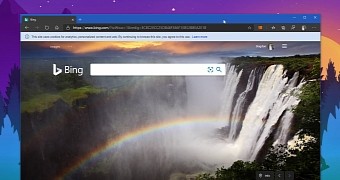Microsoft Edge moving to the Chromium engine seems to be the winning card for Microsoft, as the adoption of the new browser keeps improving on a daily basis.
So while Edge could only dream about competing against Mozilla Firefox one year ago, the new based on Chromium made the whole thing possible.
Data offered by NetMarketShare for the month of March shows that Microsoft Edge is now the second most-used desktop browser worldwide, becoming the runner-up in this race after leader Google Chrome. Mozilla Firefox is now third, and the gap between the two is likely to increase even further in the coming months.
While at this point it’s hard to tell how many people made the switch from Firefox to Edge because the market share isn’t an accurate indicator in this regard, there’s no doubt that some migrated to Microsoft’s new browser in the last few months.
And it happens for a good reason.
The Chromium engine is the one that’s also used by Google for Google Chrome, so technically, Microsoft has resolved many Edge drawbacks just by embracing this technology. Edge, for example, can now run extensions from the Chrome Web Store, something that’s possible for every Chromium browser out there.
But Microsoft Edge winning the fight against Mozilla Firefox isn’t necessarily surprising because Microsoft’s browser has one big advantage: it’s preinstalled in Windows 10, and right now, Windows 10 is the world’s leading desktop operating system.
At the same time, Microsoft has what it takes to make every Internet user aware that a new browser is in town, so many of those running other browsers might be tempted to at least give Edge a try, especially when hearing it comes with the same engine as Google Chrome.
It’s not a secret, however, that Mozilla itself isn’t happy with what’s happening.
Mozilla has criticized Microsoft for embracing Chromium in a public blog post back in December 2018, shortly after the software giant revealed its decision to give up on EdgeHTML.
“By adopting Chromium, Microsoft hands over control of even more of online life to Google,” Mozilla said.
“Microsoft’s decision gives Google more ability to single-handedly decide what possibilities are available to each one of us. Making Google more powerful is risky on many fronts,” the company continued.
Mozilla knew this was coming and it was all just a matter of time until Microsoft Edge managed to surpass its market share. But at the end of the day, it doesn’t all come down to market share, and Mozilla needs to continue improving Firefox just like it did before Microsoft joined the Chromium bandwagon.
“But if you find Firefox is a good product for you, then your use makes Firefox stronger. Your use helps web developers and businesses think beyond Chrome. And this helps Firefox and Mozilla make overall life on the internet better — more choice, more security options, more competition,” Mozilla says.
There’s no doubt that the switch to Chromium was the easiest way for Microsoft to make Edge a cross-platform hit. At this point, the new Edge is also available on older Windows and on macOS, so this decision allowed Microsoft to get back in the browser battle on Apple’s own background.
And at the same time, Microsoft is also working on a Linux version of Microsoft Edge, something that would reaffirm its commitment to the open source world, as the company reminds us on pretty much every occasion how much it loves Linux. Microsoft Edge for Linux doesn’t yet have an ETA.

 14 DAY TRIAL //
14 DAY TRIAL //